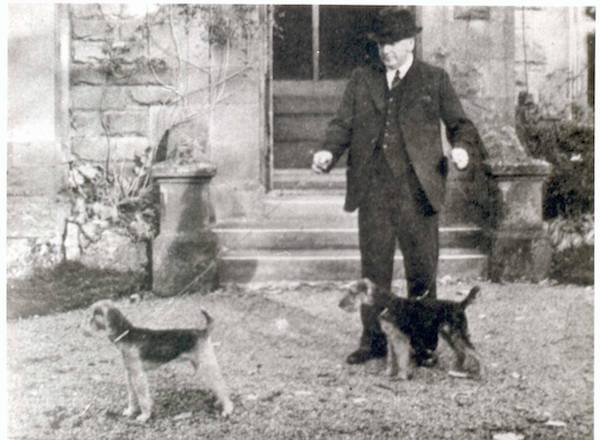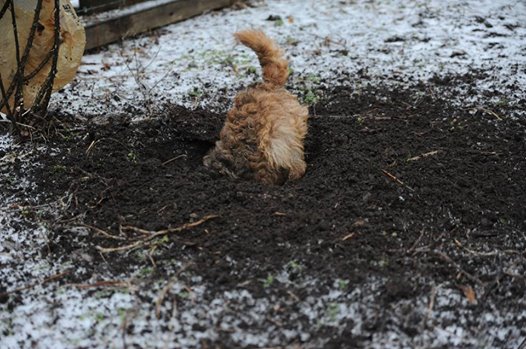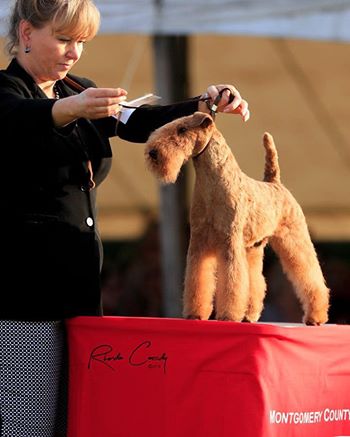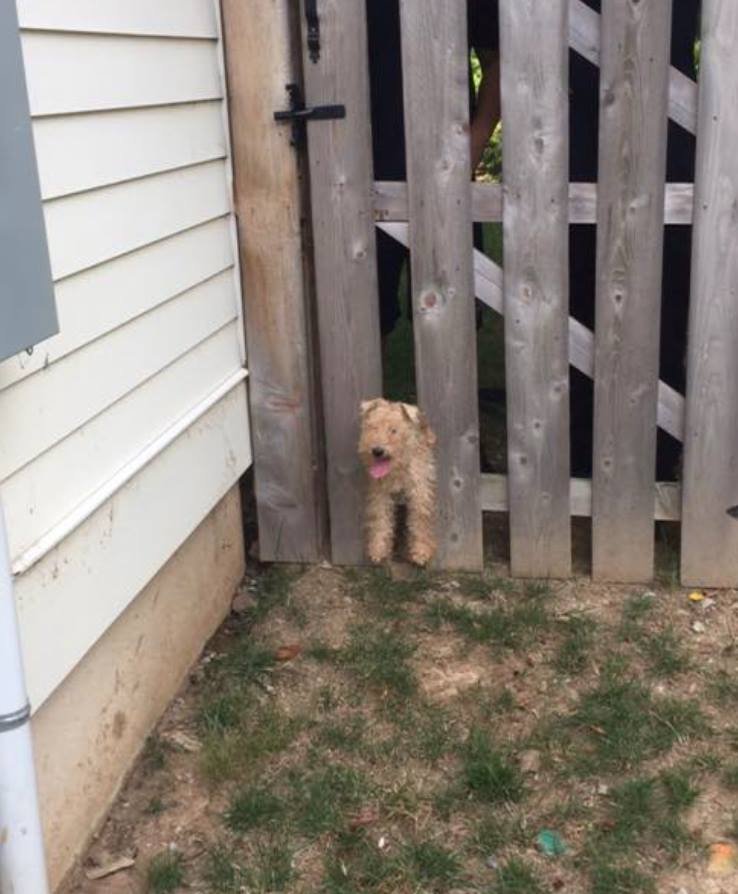
Lakies were bred to hunt and dispatch the foxes that preyed on farmers’ lambs and poultry in Britain’s border county of Cumberland. These critters were a real problem for people who made their living selling eggs, meat, and poultry because the fox is an industriousness, opportunistic feeder who’ll pursue all of the above.

“Cookie” on the hunt….
Lakeland Terriers, like the one seen above (make that “half” seen) made the fox’s job more difficult as the dogs did their jobs with tough efficiency. Originally tasked to “go to ground” in the hunt for vermin, the breed’s size made it particularly popular as a hunter in hard-to-reach places because it was said that if a Lakie could get its head into a space, the rest of the dog would follow easily. One sees the flatness of the rib cage in the photo below:

In the words of one Lakeland Terrier owner, in reality, no Lakeland head should be fully as wide as the rib cage, but the ribs really shouldn’t be much wider. The flatness of the rib cage and it’s depth give the dog the flexibility to navigate narrow spaces. Lakies are not spanned, but the judge going over this dog did, and was able to. Lakeland owning spectators were surprised to see it being done, but they weren’t at all bothered by it. A Lakeland should never have a round body like a Welsh.
The breed made good progress until World War II, but as was so often the case, war severely impacted the breed. Things improved after the war, and by 1950, Lakelands were doing great things in show rings without ever having lost their “gameness.”
Lakelands are among the long-legged terriers (like the Welsh Terrier and Wire Fox Terrier), but a Lakie should be smaller than the Welsh Terrier, who is heavier boned and taller. A Lakie is also shorter than a Wire Fox Terrier, but should be heavier built.
The Lakeland Terrier was officially recognized by the AKC in 1934, and is somewhat uncommon in the United States. Sadly, it’s among the breeds listed as “vulnerable” in its country of origin.
We conclude with a photo that suggests that most of the time, a Lakie can get through an obstacle at will. But not always…

“Cookie” foiled….
Images: Black and white vintage photo found on Pinterest and happily credited upon receipt of information – it’s “thought” to be of a Mr. Meageen with two young Lakeland Terriers. Lakeland Terrier on table courtesy of Kathleen McIndoe. Photos of “Cookie” provided by Patty Brill Harbison

What a really interesting and entertaining article, thank you!
Thanks for the note, Eric! These things almost write themselves when your subject is a breed like the Lakeland Terrier!
Fidedigno o texto. Faz jus a verdade a frase “Lakelands estão entre os terriers de pernas longas” pois meu Lakie é assim. Tanto que agora vai ser apelidado de Perna Longa.
Google translate says this comment in English reads, “Trusted the text. The phrase “Lakelands are among the long-legged terriers” is true because my Lakie is like that. So much so that now it will be nicknamed Long Leg.”